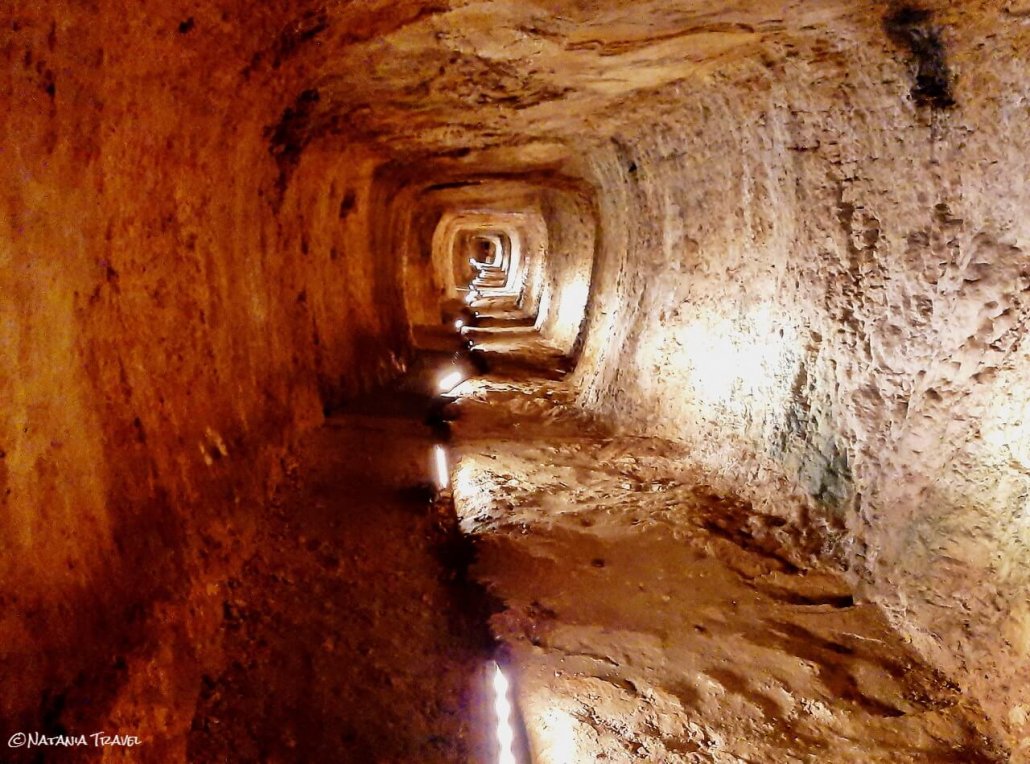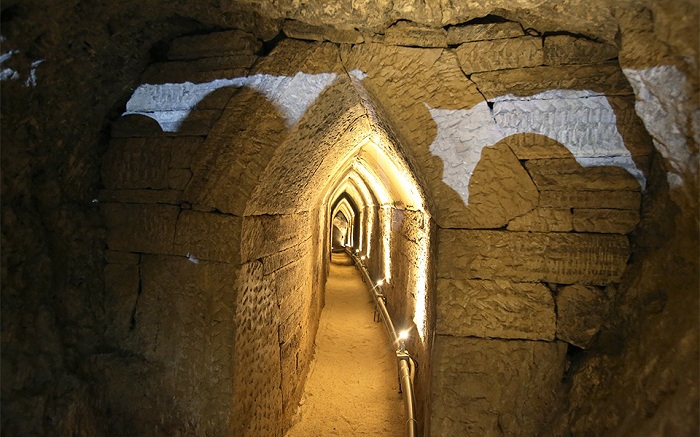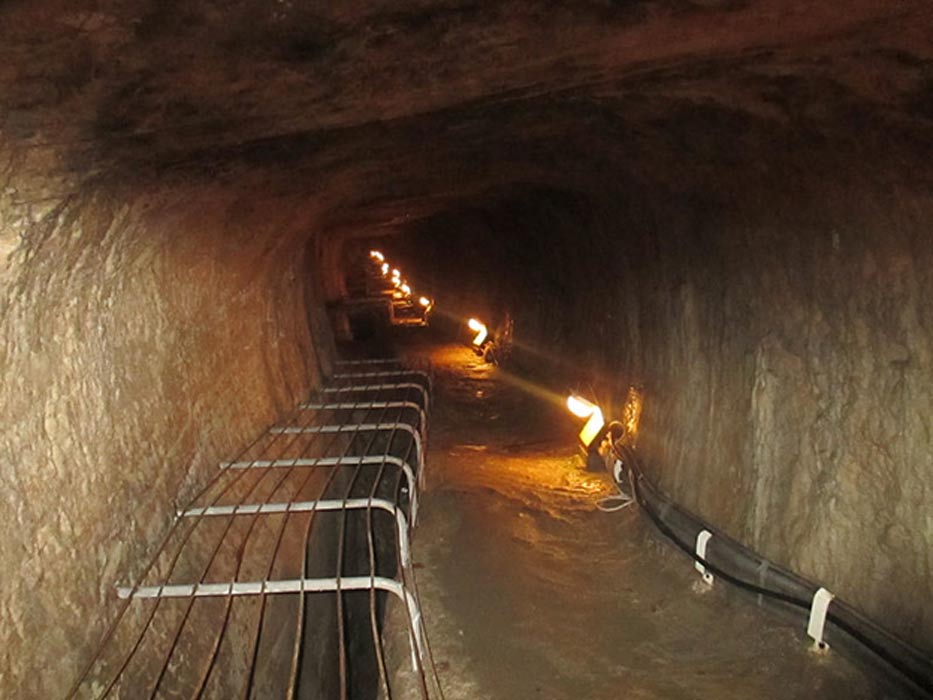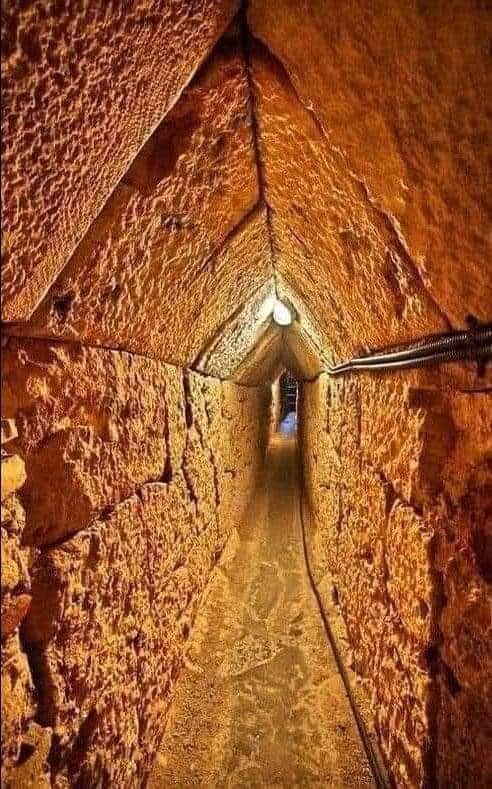The Tunnel of Eupalinos, an extraordinary feat of ancient engineering, is a testament to the ingenuity and precision of ancient Greek civilization. Stretching 1,036 meters beneath Mount Kastro on the island of Samos, this aqueduct was constructed in the 6th century BCE to secure a reliable water supply for the ancient city of Pythagoreion. Designed by the engineer Eupalinos of Megara, the tunnel remains one of the most remarkable achievements in early infrastructure development.
Historical Context: The Need for Innovation
During the reign of Polycrates, the tyrant of Samos, the island flourished as a maritime and cultural hub. However, its growing population and prominence made securing a steady water supply a pressing concern, especially in times of siege. The solution was the construction of a subterranean aqueduct, a project that would demonstrate both strategic foresight and technical mastery.

Design and Construction: A Geometric Masterpiece
The Tunnel of Eupalinos is celebrated as one of the earliest examples of engineering that employed a dual-entry excavation method. Workers began digging simultaneously from both ends of the mountain, guided by advanced geometric calculations. Remarkably, the two teams met with minimal deviation, an extraordinary achievement for its time.

Key Features of the Tunnel:
- Dual-Entry Excavation: The precision required to align the two digging teams demonstrates the ancient Greeks’ understanding of mathematics and surveying.
- Water Channel: A deeper trench within the tunnel carried water, enclosed by stone walls to protect it from contamination.
- Maintenance Galleries: These allowed for regular cleaning and repairs, ensuring the aqueduct’s longevity.
The tunnel was constructed with basic tools and without modern machinery, making its accuracy and functionality even more impressive.
Rediscovery and Preservation
The tunnel was rediscovered between 1882 and 1884 by French archaeologists, who unveiled its historical and architectural significance. Since then, it has been meticulously studied and partially restored. Today, it is a UNESCO World Heritage Site and a major tourist attraction, with sections open for public exploration.
Engineering Significance and Legacy
The Tunnel of Eupalinos is more than just an ancient aqueduct—it is a symbol of human innovation and problem-solving. Its dual-entry construction method was unprecedented and laid the groundwork for future engineering projects. The tunnel’s functionality over a millennium is a testament to its robust design and the Greeks’ understanding of hydraulics and geometry.

Modern engineers continue to study the tunnel as an early example of surveying accuracy and infrastructure development, drawing lessons from its design and execution.
Visiting the Tunnel of Eupalinos
Walking through the tunnel today is like stepping back in time. Visitors can experience firsthand the architectural brilliance of the ancient Greeks, marveling at the precision and scale of this subterranean marvel. The cool, dark passageway offers a tangible connection to history, inspiring awe for the achievements of a civilization that shaped the foundations of modern engineering.

Conclusion
The Tunnel of Eupalinos stands as a remarkable achievement in human ingenuity, reflecting the advanced technological and mathematical knowledge of the ancient Greeks. Its enduring legacy continues to inspire admiration and study, reminding us of the power of innovation in overcoming challenges.

